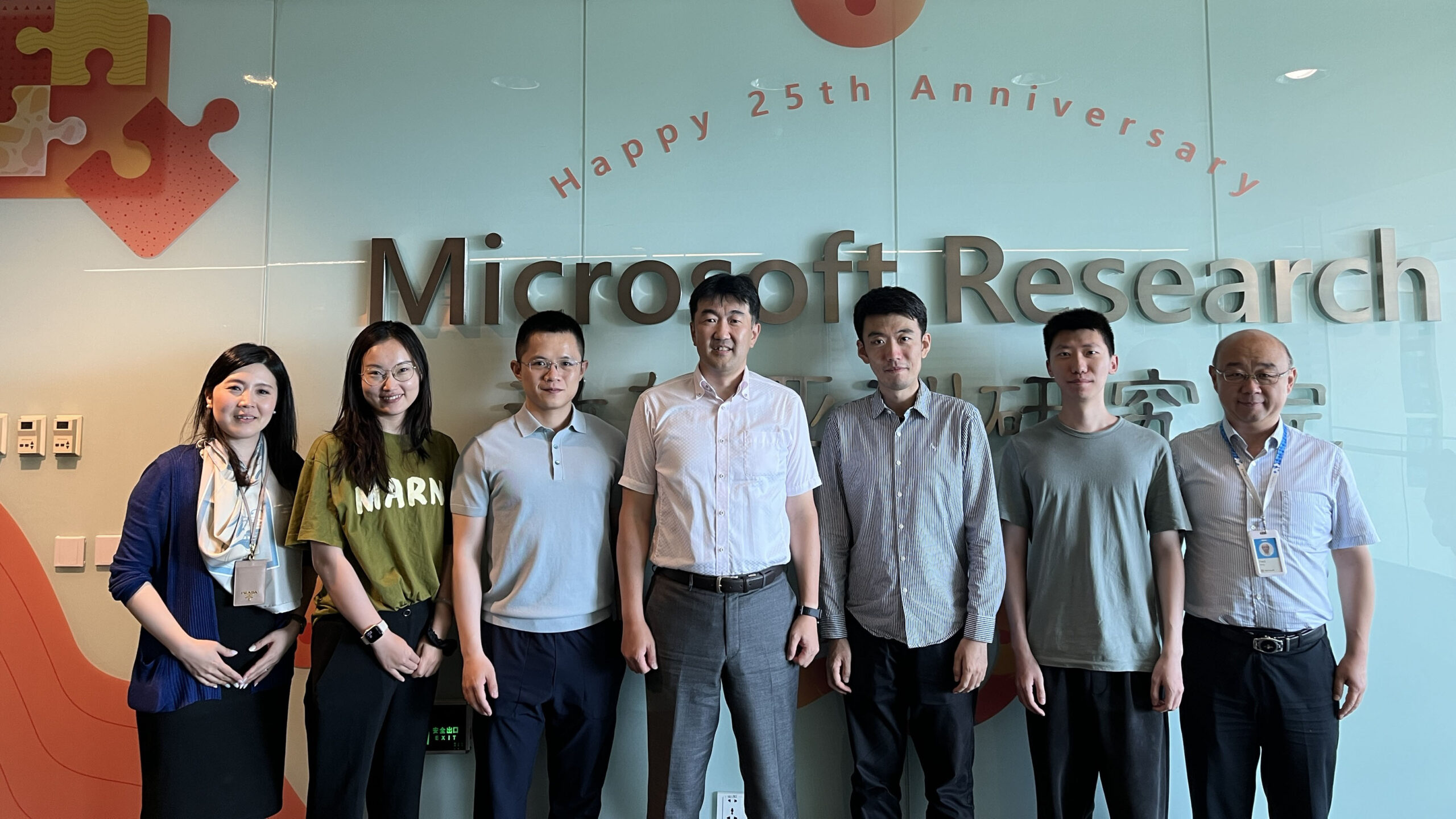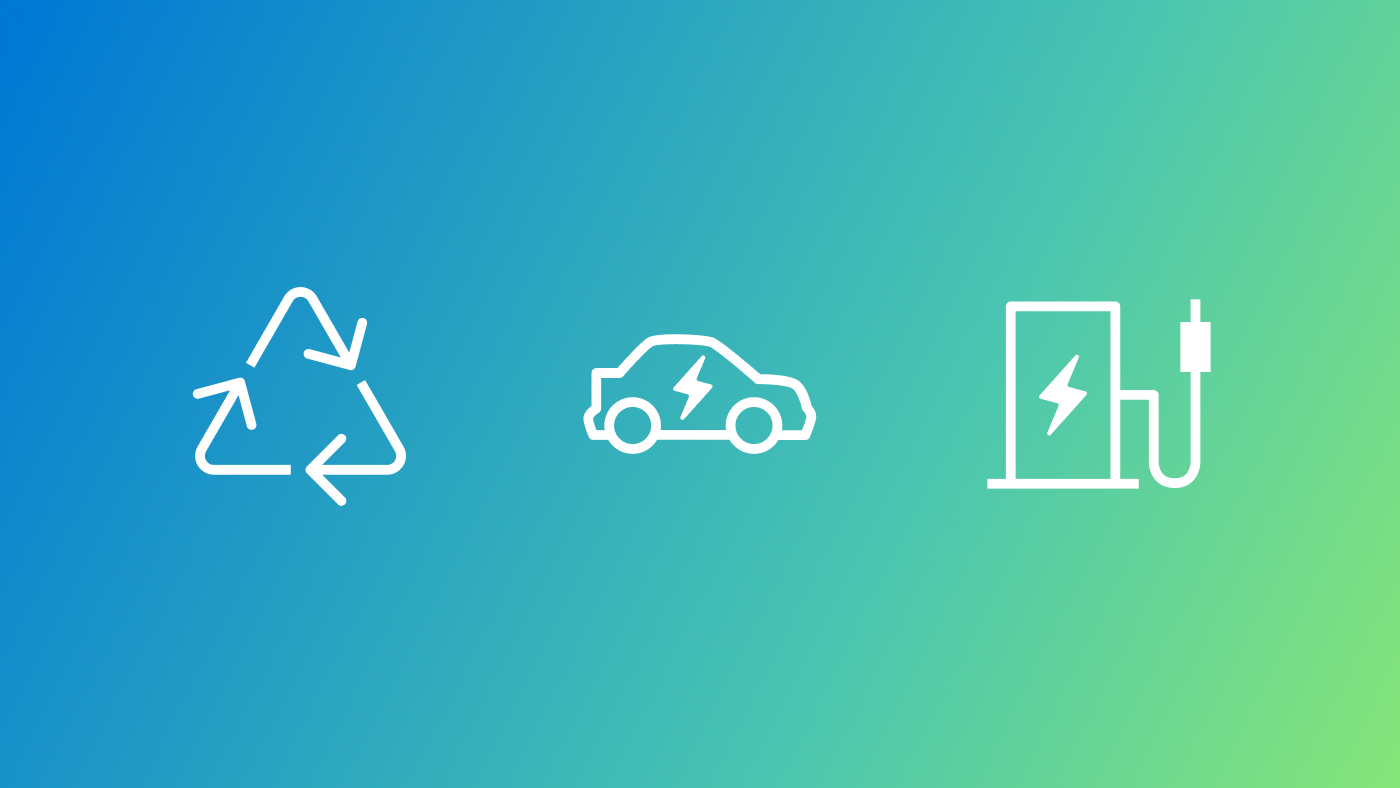
Rising carbon emissions have significantly challenged sustainable development in recent years, prompting global efforts to implement carbon reduction policies and achieve long-term carbon neutrality. A crucial step in this transition involves the recycling and reuse of power batteries, which are assessed for their state-of-health (SoH) and then repaired or restructured for reuse in smaller-sized electric vehicles (EVs), energy storage systems, and smart streetlights. This process not only extends battery life but also maximizes their residual value. However, accurately assessing this value is complex. To address this, Microsoft Research collaborated with Nissan Motor Corporation to develop a new machine learning method that predicts battery degradation with an average error rate of just 0.94%, significantly bolstering Nissan’s battery recycling efforts.
Approaching carbon neutrality, one step at a time
Nissan, the company that launched the world’s first mass-produced electric vehicle, has long been committed to reducing carbon emissions. In 2021, Nissan announced its goal to achieve carbon neutrality by 2050 throughout the vehicle’s lifecycle. Central to this effort is the management and innovation of batteries, the key power source for electric vehicles, making battery recycling is an important part of this initiative.
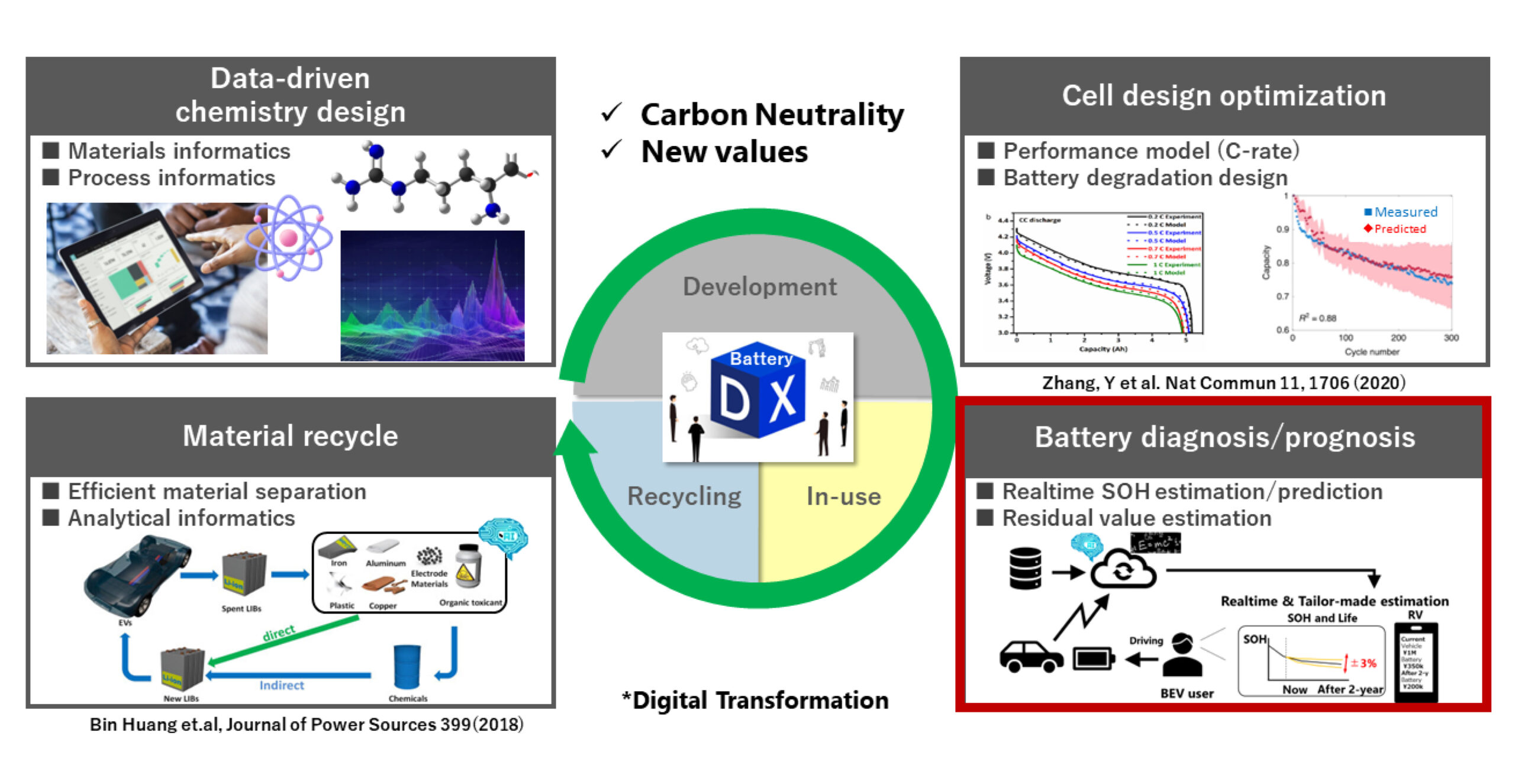
Atsushi Ohma, Expert Leader of the EV System Laboratory at Nissan, noted that EVs and their batteries currently have an average lifecycle of about 10 years, contributing to approximately 50% of their CO2 emissions in the material mining and manufacturing process. Nissan aims to extend the lifecycle of EVs and batteries to more than 15 years, reducing CO2 emissions. To achieve this, the company hopes to leverage technologies like AI and big data to drive innovation in battery and electric vehicle development.
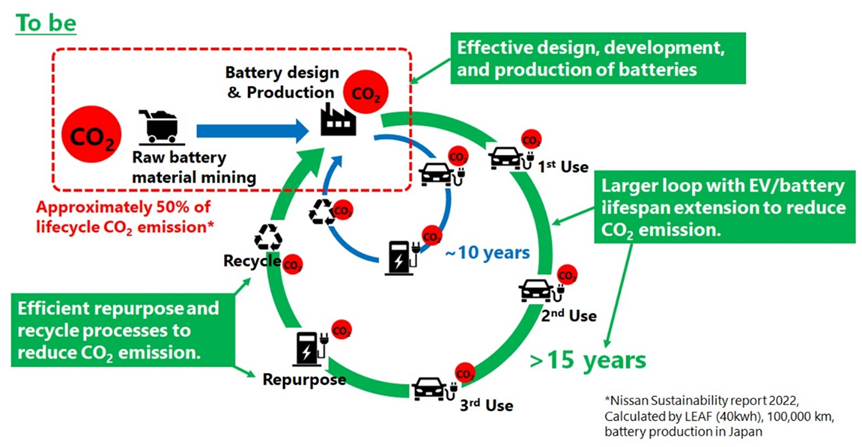
Collaborating to reduce CO2 in the EV lifecycle
Since Microsoft announced its sustainability commitments and outlined plans to work toward a more sustainable future in 2020, the team at Microsoft Research Asia has been actively engaged in addressing sustainability challenges through interdisciplinary research, collaborating with partners from related fields. The team has already developed BatteryML, an open-source machine learning tool for advancing battery research, and is working on methods to predict battery health and remaining service life. This makes the collaboration between Microsoft Research Asia and Nissan a natural one. Together, the joint team aims to achieve carbon neutrality and enhance lithium-ion battery performance prediction by focusing on battery performance degradation.

“Through our collaboration with Microsoft Research Asia, we are innovating battery degradation prediction methods to enhance the effectiveness of battery recycling and promote resource reuse. This is a pivotal step in our journey towards achieving long-term carbon neutrality. We call it ‘thinking big and starting with small steps.’”
Atsushi Ohma, Expert Leader, EV System Laboratory, Research Division, Nissan
Enhancing battery predictions with speed and accuracy
Understanding the SoH of batteries is crucial for efficient battery recycling. While usable capacity does not fully represent SoH, more important factors include the integrity of the battery’s chemistry over its life, such as the levels of lithium, cobalt, and nickel. Traditionally, battery degradation prediction relies on mathematical models based on chemical, electrochemical, and mechanical principles. This method requires continuous experimentation to adjust parameters, involving lengthy processes like battery disassembly and analysis, which can take six months to a year. Additionally, further experimentation and parameterization are needed whenever the chemistry changes. To address this, Nissan aims to apply machine learning to predict battery health based on external signals, minimizing the need for extensive physical testing.
However, there are two main challenges to using machine learning to predict battery performance. First, it’s difficult to gather sufficient data due to the lengthy charging and discharging cycles. Second, because batteries operate under varying conditions, signal acquisition is complicated. Additionally, external environmental factors can influence battery capacity without directly reflecting its health status.
To filter out this “noise” and identify patterns that accurately reflect the battery’s internal condition, researchers have developed specialized features to analyze how the internal chemistry of lithium-ion batteries changes under different voltage and current conditions. By integrating these key features with real Nissan data, researchers improved the prediction accuracy of their machine learning models.

“We found differences between academic public datasets and real-world corporate data. Models built on academic datasets are difficult to apply in enterprise settings due to variations in data patterns, testing conditions, and prediction goals. Developing broadly applicable models for industry requires integrating proprietary enterprise data with advanced AI technologies.”
Shun Zheng, Senior Researcher, Microsoft Research Asia
Data-driven model boosts accuracy by 80% in simulations
The machine learning methodology redefines the entire feature space to provide a comprehensive understanding of battery degradation. Advanced feature engineering analyzes diversified features derived from degradation patterns in voltage-capacity curves during charging and discharging cycles, as illustrated in Figure 3. Researchers focused on distinguishing information between high and low voltage intervals, including first-order and higher-order differences as effective indicators of battery health, enhancing predictive power and providing deep insights into battery performance and longevity.
![The graph depicts discharge capacity of a battery cell at a specific voltage during the 50th cycle. The x-axis is labeled “Capacity [mAh/g]” and the y-axis “Cell Voltage [V]”. A descending line graph illustrates the relationship between cell voltage and capacity, with a highlighted point “Q^d (Vx)” representing the discharge capacity at that voltage during the 50th cycle. The accompanying text shows that this method is more accurate than using “Var(Δ_x-0 * Q^d)”.](https://www.microsoft.com/en-us/research/wp-content/uploads/2024/07/Feature-engineering-from-MSRA.jpg)
Compared with popular state-of-the-art battery prediction methods, this data-driven model improves accuracy by approximately 80% with Nissan’s simulation data and by over 30% with real-world experimental data. The new method has achieved a mean absolute error (MAE) of 0.0094 in predicting SoH at the 200th cycle using data from only the first 50 cycles, as shown in Figure 4.
This demonstrates that the new data-driven model is not only more accurate but also more efficient in predicting a battery’s SoH compared with existing methods. It requires less data and fewer cycles to make precise predictions, offering significant advantages for battery health monitoring and management.
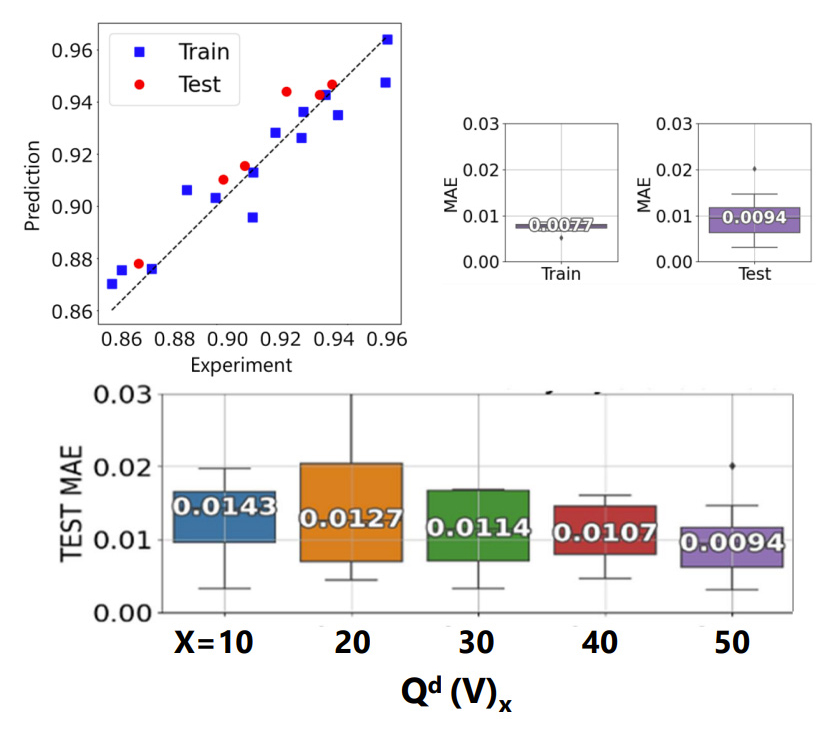
By employing the data-driven method, researchers discovered that the indicated feature at 3.9 volts can be interpreted as the nickel manganese cobalt oxide (NMC) crystalline structure (M->H2). This finding aligns with electrochemical research and highlights that the features identified through our data-driven approach have significant real-world implications for understanding battery degradation.

“This research extends the lifespan of power batteries in two ways: first, by improving reuse potential and accurately determining their remaining lifespan; and second, by developing effective recycling strategies for retired batteries. The unique approach of our joint research was to predict not only cell SoH but also cathode (NMC) SoH to improve the reliability of the cell SoH prediction model. It was surprising that the high sensitivity to certain voltages (3.9V) indicated by the data-driven cathode (NMC) SoH prediction model aligns with results from the physics-based method. Collaboration with Microsoft Research Asia has demonstrated that AI can be applied to battery manufacturing, including material selection and process optimization.”
Jungwon Moon, Engineer, EV System Laboratory Research Division, Nissan
Looking ahead: Exploring AI’s sustainability applications
The collaboration between Nissan and Microsoft Research Asia highlights the potential of AI technologies, including machine learning and deep learning, in the EV sector. Beyond predicting battery health for recycling, AI can optimize the driving experience by accurately predicting battery life and enabling smarter driving. Additionally, AI holds promise for discovering new materials and driving innovation in battery and EV technology.

“There are existing issues with lithium batteries. We need batteries with high energy density, good safety, a long lifecycle, and with a minimal environmental impact. Through our collaboration with Nissan, we have learned that AI has great potential in the EV, including optimizing battery material combinations to improve performance, discovering new materials, and optimizing battery electrode processes. In the future, we hope to collaborate with more industry partners to further explore AI’s potential in various industrial applications.”
Jiang Bian, Senior Principal Researcher, Microsoft Research Asia
Building on their initial results, Nissan and Microsoft Research Asia plan to expand their collaboration to further advance technology and accelerate progress toward sustainable development and environmental protection goals.
